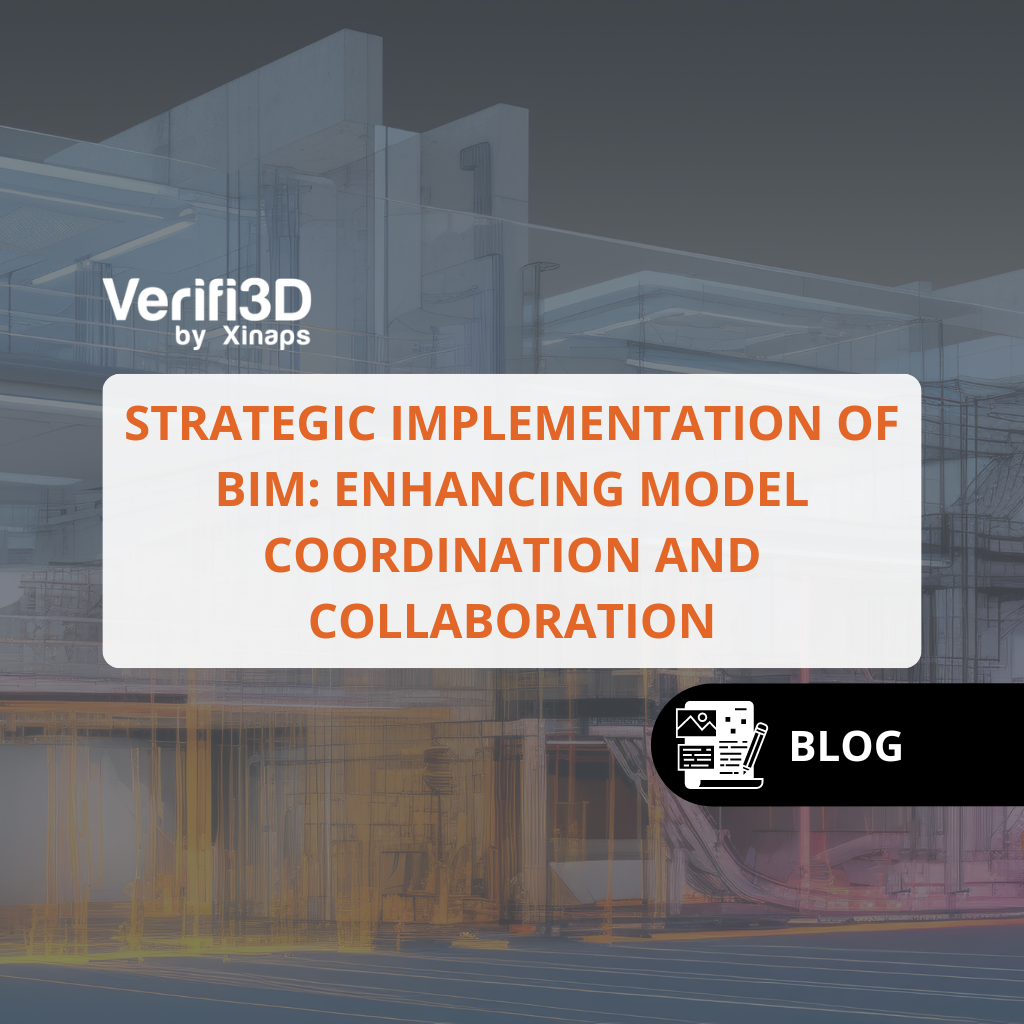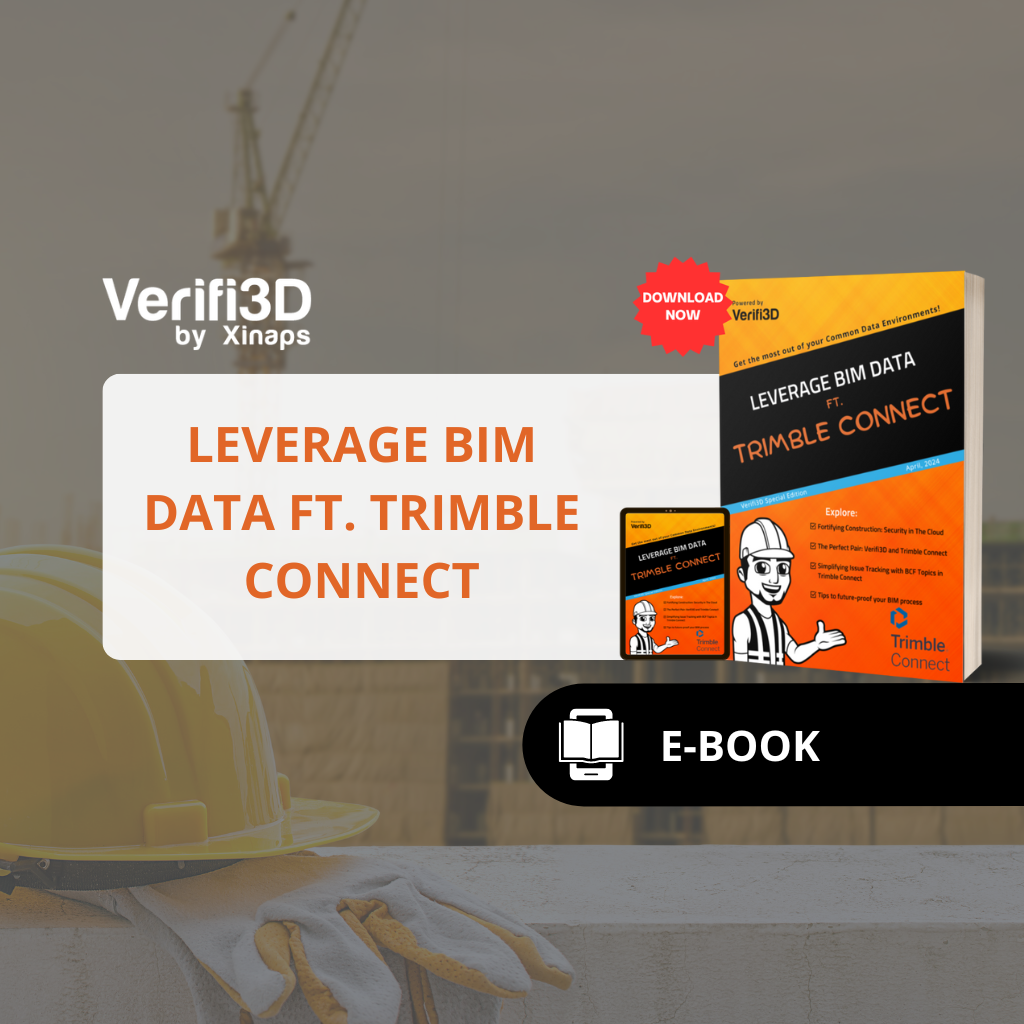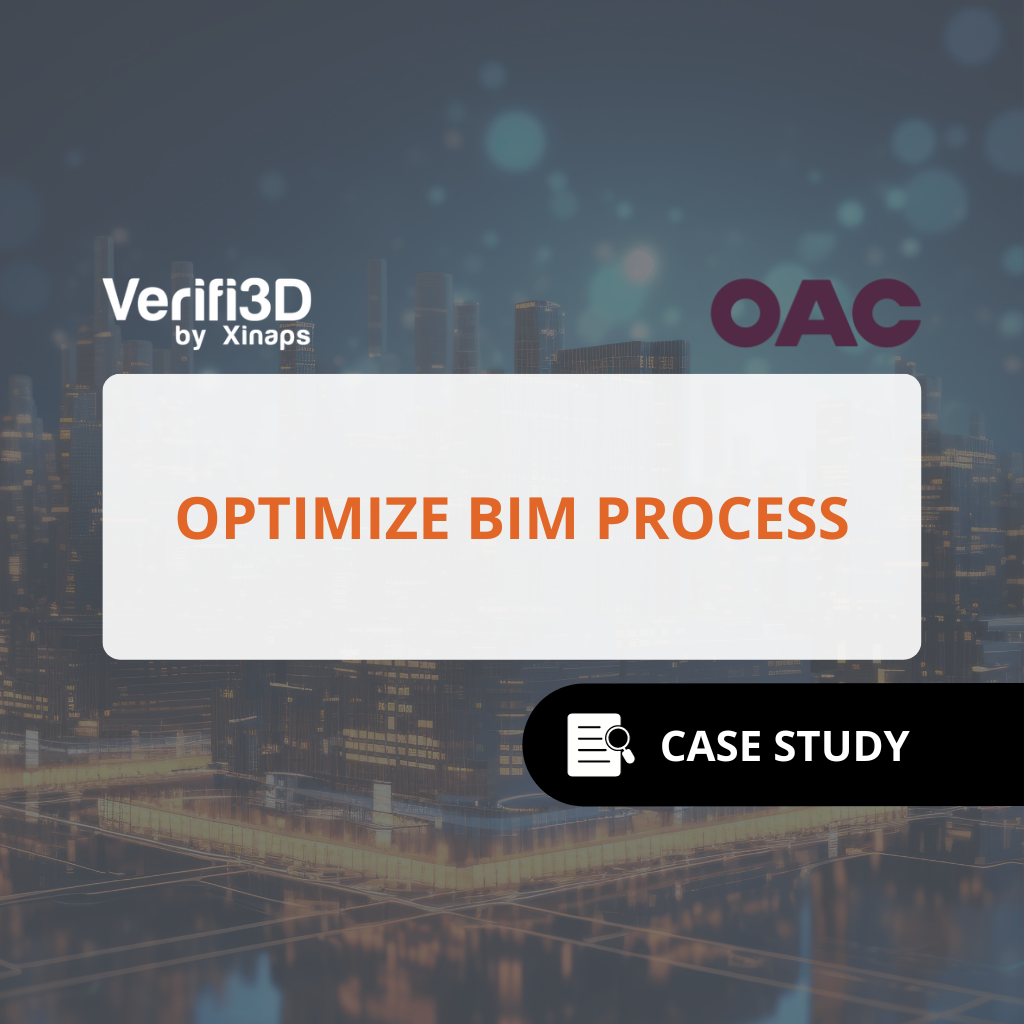
Strategic implementation of BIM: Enhancing model coordination and collaboration
Did you know that the success of a BIM project depends on the ‘M’ in BIM? This crucial point stands for model, modeling, and management. Building Information Modeling (BIM) projects rely heavily on the effective management of the model, which encompasses not just the software and technology but also the processes and workflows involved. Without a clear strategy and well-defined processes, BIM projects can become chaotic and ineffective.
BIM models are often created as a result of an ad hoc software implementation, but this is preceded by a controlled process. With a strategic approach, you prevent uncontrollable and untargeted data. Strategic planning as a BIM team makes the difference between failure and success.
Fortunately, there are software solutions that support your BIM strategy and enable the digital process. Using software solutions designed for BIM processes can significantly improve the efficiency and effectiveness of BIM projects. These tools help manage the data, facilitate collaboration among team members, and ensure that the model remains consistent and accurate throughout the project lifecycle. Strategic planning and the right software tools indeed make a significant difference in the success of BIM projects.
Start with strategic planning as a team before BIM implementation
There are countless reasons to start a project with BIM. With strategic planning, you manage not only the BIM objectives but also the delivery of crucial data to digital twins and other emerging technologies that digitally transform AECO operations. To achieve these goals, including the effective Common Data Environment (CDE), collaborative BIM planning ensures clarity, transparency, and collaboration, and prevents digital waste and misunderstandings. But above all, planning increases the financial return on a project. Consistent BIM management and model checking during the design phase can quickly detect costly errors.
Finally, a well-thought-out BIM plan can significantly enhance project outcomes and pave the way for broader adoption and long-term benefits.
Model coordination
Model coordination is the heart of a successful BIM process. Various disciplines federate their models into a consistent and complete information model. It helps the team identify and resolve constructability issues or conflicts between various disciplines digitally before construction activities begin, preventing schedule and budget problems. Model coordination also improves collaboration and communication among project stakeholders, leading to continuous learning, more efficient project delivery and higher-quality outcomes.
Resolving coordination issues digitally before on-site activities is the most affordable, least disruptive, and most secure way to prevent issues. Model coordination ensures good field coordination, reliable cost analysis, accurate planning, improved communication, quality and compliance with safety standards.
Seamless collaboration of models and issue reporting
Close collaboration between different disciplines is essential for smooth collaboration of models. Various software tools can be used for this, such as planning tools, BIM authoring tools for model creation, CDEs for data storage and information exchange, model checkers and issue trackers.
Integration is key to ensuring that issue trackers remain effective within the BIM environment. Issue tracking often poses a significant challenge due to the complex and interconnected nature of various project components. Traditional methods of issue identification and resolution often fall short of addressing the intricacies inherent in design workflows. Tracking issues across different versions while maintaining data integrity requires meticulous oversight and coordination. This is where Verifi3D emerges as an authority in model checking, offering more than just model coordination and clash checking unlike legacy tools and standalone issue trackers. With its powerful integration capabilities, Verifi3D provides a central hub to manage and report issues effectively. This integration is crucial for ensuring that issue trackers remain impactful within the BIM environment. Verifi3D empowers teams to make informed decisions, minimize risks and deliver successful outcomes throughout the project lifecycle.
Collaborative workflows in BIM
Automated clash detection can help prevent design errors, ad-hoc scope changes, and construction delays, while digitalized workflow integration can streamline the entire process. The templates and clear checklists for model checking are very useful for ensuring that all necessary information requirements documented in a BIM Execution Plan (BEP) are met. Verifi3D offers automated clash detection, which immediately identifies potential conflicts between different model parts, and workflow integration, which minimizes manual work. However, the tool also has templates for model checking and clear checklists with information requirements. Furthermore, Verifi3D improves communication between team members by generating clear reports on identified clashes and coordination issues. This ultimately significantly improves overall collaboration and model coordination.
Best practices for model coordination
How do you arrive at a good process for model coordination? There are many best practices, depending on the project workflow and business characteristics. Hence, project teams are encouraged to establish agreements and together define clear guidelines for best modeling practices, naming conventions, file organization, and model quality requirements. This ensures that each model is created and checked consistently and people who manage their scope of work can rely on their project partners for reliable and clean data.
Problems with information exchange and software version-specific compatibility issues can be prevented by using open data standards that support interoperability. While open standards like IFC can introduce inefficiencies, they are crucial for interoperability between different software and disciplines. Use them wisely, focusing on key data exchanges and avoiding excessive detail in the early stages. Ensuring that the data created during design and digital construction phases can be inherited into building management operations, BIM models are recommended to be compliant with COBie (Construction Operations Building Information Exchange). COBie requirements support the organized transfer of asset information to facility management systems. This streamlines the handover process and improves the overall efficiency of the project.
Using automated clash detection tools to identify and resolve conflicts between different building elements early in the design process helps avoid unbudgeted rework and ensures frictionless coordination. Real-time reporting tools help monitor the progress of model coordination activities and track issues as they are identified and resolved. Transparency helps the team keep the project on schedule and supports timely decision-making. Reducing manual model checks prevents potential human error and increases the accuracy and efficiency of model coordination activities.
Successful companies with a strategic BIM strategy ensure automated clash detection, streamlined COBie support, real-time reporting and minimization of manual checks. This approach ensures efficient model coordination and collaboration within the BIM framework.
A look at the future
BIM usage on projects is growing rapidly. Emerging technologies like machine learning (ML), artificial intelligence (AI), and cloud-based collaboration are shaping the future of the AECO industry. Technology makes global real-time data exchange possible. Regional, national, international, and global regulations and standards are continuously being developed by industry experts to ensure uniformity in digitization, digitalization, and digital transformation of the growing digital construction industry.
Verifi3D prepares you for this future. Verifi3D is the connecting factor between BIM tools, promotes collaboration and enables global data exchange directly. Another advantage: with the tool you are always assured that you comply with ever-changing regulations and standards.
Putting more focus on a good BIM strategy, model coordination, and collaborative workflows helps people understand how a BIM contributes to maximizing the outcomes of future projects. Verifi3D facilitates this and ensures a controlled BIM process with valuable data, and ultimately seamless collaboration of people and models.
Medewerker

Vicevoorzitter Innovatie
OAC Services, Inc.

Vicevoorzitter Innovatie
OAC Services, Inc.


























